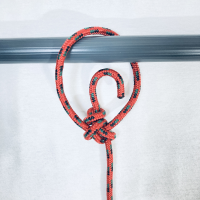No, you misunderstand. It's not against you. If anything, I appreciate that you clarified it's AI-generated. This way, anyone who reads it knows the source.
The problem is using AI and trusting it without verifying. When you say "
I read that the bowline can get open if the weight moves back and forth.", it can be misleading, because it sounds like you read it in an article or it's from a legitimate source. Also, in a literal sense, that statement is not true.
Parts of that AI-generated text have some truth in them, but it lacks nuance and understanding. And other parts are confusing, just don't make sense, or are incorrect.
The reason I said "I won't bother" is that correcting and explaining everything the AI said feels exhausting. It'd mean writing a full article on the Bowline, which I don't feel like doing right now. Whereas if it had been from a human-written or human-verified article, I'd expect other parts already clarifying these statements, which I could have referred to.
If you don't trust the Bowline and want to learn more about it, I'd suggest reading some articles on it, for example on climbing-related websites, or any general knot-related article (preferably written or at least reviewed by a human).
You can also get a piece of rope, and try it. If you tie it to something and put your weight on it, it won't come loose, even if you start swinging on the rope or move back and forth.
Alternatively, if you still don't trust it, you can always use a different knot.
Speaking of reliable sources, below are some quotes from
The Ashley Book of Knots regarding the Bowline.
As with any other knot, it's important to tie the bowline correctly. Below are examples of the Bowline with a stopper knot, correctly tied.


